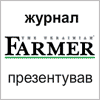UGA again increased the crop forecats in 2023 by 3.7 MMT – up to 80.5 MMT of grains and oilseeds

The Ukrainian Grain Association has updated its estimate of the potential crop in 2023, increasing it by another 3.7 MMT to 80.5 MMT of grains and oilseeds. As a reminder, in 2022, the UGA the harvest reached 73.8 MMT of grains and oilseeds.
The increase in the forecast for this year’s harvest is due to favourable weather conditions and better crop yields than expected, although the area planted is almost 2 million hectares less than last year.
Exports from Ukraine in the new 2023/2024 season could potentially reach almost 49 MMT. Last season (which ended on June 30, 2023), exports reached 58 MMT.
The UGA emphasizes that such export volumes in the new season can only be achieved if Ukraine is able to export through its Black Sea ports and if the logistics of alternative routes, including the Danube route, are improved and cheaper. The world has already seen that exporting grain through Ukrainian ports and ensuring the safety of navigation in the Black Sea is the only way to deliver Ukrainian grain quickly and efficiently to countries that desperately need it.
However, in the context of Russia’s blocking of shipping in the Black Sea and its attacks on port infrastructure, the UGA continues to work with the European Commission to compensate European carriers for transporting Ukrainian grain from the border to European ports. This will allow Ukrainian producers to retain a part of the price that they are currently forced to spend on much more expensive logistics. It is worth reminding that the UGA initiative to compensate European carriers was supported by the European association COCERAL, which also appealed to the European Commission on this issue.
Also, the problem of increasing the capacity of the Sulinsky Channel on the Danube is being solved by introducing round-the-clock operation of the Channel and increasing the number of pilots. UGA is also working with the US and the EU to establish anchorages in Romanian territorial waters to reload Ukrainian grain from barges to larger Handysize and Panamax vessels, which will make logistics across the Danube more efficient.

The estimate for the wheat crop in 2023 improved from 20.2 to 22 MMT (20.2 MMT in 2022 and a record 33 MMT in 2021). Potential wheat exports in 2023/2024 MY may amount to about 16MMT, taking into account that at the beginning of the season the carry-over stocks amounted to 4.4 MMT.

Barley crop forecast for 2023 also increased from 5.2 to 5.8 MMT (in 2021 – 10.1 MMT, and in 2022 – 5.8 MMT), and potential exports in 2023/2024 MY can be expected at 3 MMT. Expectations for the corn harvest in the new season improved slightly from 26.9 to 28 MMT (in 2021 – 37.6 MMT, in 2022 – 27.3 MMT), while exports may amount to about 22 MMT.
The sunflower harvest in 2023 is expected to reach 13.9 MMT (in 2021 – 16.9 MMT, in 2022 – 11.1 MMT), and the potential exports could reach 0.5 MMT. Sunflower crush for oil may reach 13.2 MMT.
We estimate the rapeseed crop in 2023 at 4.1 MMT, while exports in 2023/2024 MY are expected at 4 MMT. The soybean harvest is expected at 4.8 MMT, and the potential exports in 2023/2024 MY may reach 3.3 MMT.
Obstacles to grain exports from Ukraine have a negative impact on the availability of grain on the world market. According to the US intelligence community in a report to the US Congress, russia’s invasion of Ukraine has caused deep disruptions in global food supplies, raising prices and increasing the risk of food insecurity in poor countries in the Middle East and North Africa. Rising prices also lead to food inflation in developed countries. If Ukrainian farmers are unable to export their products, they may reorient their production and abandon grain growing, which will further deepen the crisis on the global food market in the medium term.
IC UAC according to the UGA
- 806 reads








